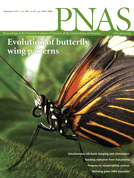PNAS:宫颈癌细胞起源的重大发现
2012-06-18 T.Shen 生物谷
近日,来自新加坡的ASTAR医学研究所、新加坡基因组研究所和波士顿妇女医院的研究人员发现了女性宫颈中一种特定类型的细胞是和HPV(人类乳头瘤状病毒)相关宫颈癌的主要促发因素。而且这些特定细胞被切断之后并不能够再生。相关研究成果刊登在国际著名杂志PNAS上。 宫颈癌是新加坡常见的妇女第七大癌症,每年新增200例患者。感染HPV是患宫颈癌的主要风险因子,HPV感染可以促使侵袭前癌症,命名为CIN(宫

近日,来自新加坡的ASTAR医学研究所、新加坡基因组研究所和波士顿妇女医院的研究人员发现了女性宫颈中一种特定类型的细胞是和HPV(人类乳头瘤状病毒)相关宫颈癌的主要促发因素。而且这些特定细胞被切断之后并不能够再生。相关研究成果刊登在国际著名杂志PNAS上。
宫颈癌是新加坡常见的妇女第七大癌症,每年新增200例患者。感染HPV是患宫颈癌的主要风险因子,HPV感染可以促使侵袭前癌症,命名为CIN(宫颈上皮内瘤样病变),对于机体具有前癌性损害,可以不断发展,如果不及时治疗容易引发扩散性癌症。
研究者Crum表示,近10几年来我们都不太清楚由HPV所引发的宫颈癌病例不断上升,而且这种疾病仅仅是从宫颈不连续的区域(鳞状柱状上皮接合处)扩散的。研究者的研究发现解开了这个谜底,对于改造动物模型也带来了巨大帮助。研究小组所发现的这种离散型的细胞位于宫颈口的鳞状柱状上皮接合处,可以独特表达其生物标记物,这就意味着这种细胞可以提供潜在的危险的损伤。
IMB的研究者Xian表示,我们的研究也揭示了这种毒性细胞被切除后并不能够再生,这将帮助我们解释经过切除治疗后HPV感染者低的发病率。而且这项工作也验证了研究者之前的工作,之前研究者揭示了某些癌症源于一小类别的特殊细胞。研究者Lane说:“总之,这项研究为以后治疗宫颈癌的疗法提供了新的思路和更为深入的理解。
编译自:Groundbreaking Discovery of the Cellular Origin of Cervical Cancer
编译者:T.Shen

doi:10.1073/pnas.1202684109
PMC:
PMID:
A discrete population of squamocolumnar junction cells implicated in the pathogenesis of cervical cancer
Michael Herfsa,b, Yusuke Yamamotoc, Anna Lauryd, Xia Wange, Marisa R. Nuccia, Margaret E. McLaughlin-Drubinf, Karl Müngerf, Sarah Feldmang, Frank D. McKeonc,e,1, Wa Xiana,h,1,2, and Christopher P. Cruma,1,2
Infection by carcinogenic human papillomaviruses (HPV) results in precancers [cervical intraepithelial neoplasia (CIN)] and cancers near the ectoendocervical squamocolumnar (SC) junction of the cervix. However, the specific cells targeted by HPV have not been identified and the cellular origin of cervical cancer remains elusive. In this study, we uncovered a discrete population of SC junctional cells with unique morphology and gene-expression profile. We also demonstrated that the selected junctional biomarkers were expressed by a high percentage of high-grade CIN and cervical cancers associated with carcinogenic HPVs but rarely in ectocervical/transformation zone CINs or those associated with noncarcinogenic HPVs. That the original SC junction immunophenotype was not regenerated at new SC junctions following excision, not induced by expression of viral oncoproteins in foreskin keratinocytes, and not seen in HPV-related precursors of the vagina, vulva, and penis further support the notion that junctional cells are the source of cervical cancer. Taken together, our findings suggest that carcinogenic HPV-related CINs and cervical cancers are linked to a small, discrete cell population that localizes to the SC junction of the cervix, expresses a unique gene expression signature, and is not regenerated after excision. The findings in this study uncover a potential target for cervical cancer prevention, provide insight into the risk assessment of cervical lesions, and establish a model for elucidating the pathway to cervical cancer following carcinogenic HPV infection.
本网站所有内容来源注明为“梅斯医学”或“MedSci原创”的文字、图片和音视频资料,版权均属于梅斯医学所有。非经授权,任何媒体、网站或个人不得转载,授权转载时须注明来源为“梅斯医学”。其它来源的文章系转载文章,或“梅斯号”自媒体发布的文章,仅系出于传递更多信息之目的,本站仅负责审核内容合规,其内容不代表本站立场,本站不负责内容的准确性和版权。如果存在侵权、或不希望被转载的媒体或个人可与我们联系,我们将立即进行删除处理。
在此留言













#PNAS#
125
#重大发现#
68
#癌细胞#
116
#宫颈#
71